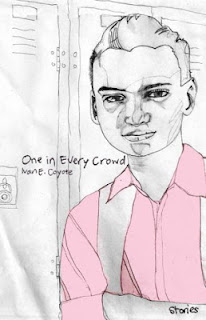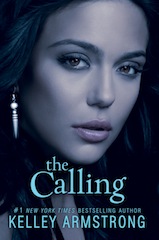
American novelist Michael Chabon, begging, borrowing and
mining his own material, has crafted an epic timepiece with Telegraph
Avenue. The 465-page book, set in Oakland,
California, is a stew of Chabon's recognizable themes, almost
unbearably imperfect characters, shot through with comic-book and other
pop-culture references. The plot centers on Archy Luther and Nat Jaffe, the
proprietors of Brokeland Music, a community hub for customers who daily loiter
at the counter. Archy, a black character, and Nat, a Caucasian one, are best
friends. They are the centre of the wheel whose spokes include Gwen Shanks,
Archy’s imminently pregnant wife, Aviva Roth-Jaffe, Nat’s wife, and midwife
partner of Gwen, as well as Julius Jaffe, their 14-year-old son, emerging into
his own teen identity.
What drives the plot forward, despite Chabon’s seemingly best efforts at delay,
are baron-of-industry Gibson Goode’s plans to install a massive Dogpile
megamall. Dogpile could foster black community spirit through jobs, but also
grind the flagging Brokeland Music into bankruptcy.
The locals view the larger-than-life personality of
ex-pro football athlete, Gibson Goode and his plans to install his extremely
successful business in Oakland, as untrustworthy at best and menacing at
worst. His enterprising villainy acts as a foil, bringing out the worst and
best in Archy and Nat. Goode also flies around in a zeppelin displaying
the Dogpile logo. The name is both a crude reference to a white male
inferiority complex regarding black male virility, and a metaphor for the
menace Goode represents to Brokeland Records and, thus, its owners. The zeppelin,
as absurd a visual device as it is (i.e.: Look what’s looming overhead! The
uncertain future!), does add an Ahab-and-Moby-Dick allegory that shadows Archy
and Nat.
Chabon mixes in rich references to not only music (characters’ reviews of jazz,
funk, soul, blues), but also pop culture, particularly Marvel Comics and
DC Comics characters, and sci-fi film staples such as Star Wars and Star Trek.
These topics are so hot and heavy that the reader often wonders if Chabon was
on a Quentin Tarantino and comic book bender when he wrote the novel.
Characters also repeatedly discuss the director, and his films.
Telegraph
Avenue’s first half lurches more than moves forward, with character
establishment aplenty. Gwen and Aviva endure professional trials as midwives. Archy
and Nat grapple over whether to fight the Dogpile move, or to join Gibson
Goode. Julius develops a friendship with an estranged black boy named Titus Joyner.
About halfway through this rich narrative, anyone who has
read Chabon’s The
Amazing Adventures of Kavalier and Clay or has seen or watched Chabon’s Wonder Boys will
note several familiar elements, here. The latter novel was also a 2000 feature
film starring Michael Douglas, Frances McDormand, Tobey Maguire, and Katie
Holmes (arguably Holmes' last good role). The film is stellar and odd at once, and worth repeated viewings.
Without revealing more of the plot, there are long-lost relatives, massive works-in-progress, gifted young artists, dope, and chronic indecision in Telegraph, all of which Chabon has used before.
There is a long-lost
father and a long-lost son in Telegraph,
as there were in Kavalier.
There’s a character coming out of the closet, as in both previous
books. Telegraph also features an unfinished opus, a common trait in Wonder and Kavalier. Archy’s deadbeat, drug addict dad, Luther, a washed-up kung-fu action
hero, has for years been planning a third installment of his ubiquitous Strutter series, much like Professor Grady
Tripp in Wonder has
been writing a never-ending novel and much like a character in Kavalier chips away at a novel over the course of many years.
Chabon also adores a prodigy. Titus, Julius' chum in Telegraph, has written three screenplays, showing signs of a young ingénue. The James Leer character in Wonder is an English Lit major with a novel under his belt, a work that might be brilliant.
Marijuana features in Wonder and Telegraph; while Archy is alright with indulging, in moments of deep self pity, of smoking pot in Telegraph,Professor Tripp in Wonder
is a pothead, hence his endless prose.
Archy is also yet another chronically indecisive person, as Tripp
was in Wonder.
Tripp’s problem was that he smoked too much dope, wouldn’t finish his novel,
and wouldn’t commit to his girlfriend and leave his wife. Thus, the currents of
life washed Tripp about at their whimsy. Likewise, Telegraph’s Archy
navigates the eddies and flows of a furious wife, a courting Gibson Goode, an
irascibly cranky best friend, an absentee father who asks for a handout, and
other challenges that he is simply ill-equipped to handle.
As a reader, the weight of these above comparisons
detracted from my initial enjoyment of Telegraph.
Luckily for me, and, moreover, for Chabon, he rises above
his rather familiar literary playground. He increases the pace of the prose after half-time. Chabon
also displays characters enduring the human condition. He places readers in
their shoes, miserable or no, and immerses the reader in their lives and
mindsets.
What also won this reviewer over was not knowing exactly
how Chabon would conclude his tale. At one moment, readers might expect a
kung-fu rally from Luther Stallings, or perhaps a cheaper plot turn, a bad fate
for the aforementioned zeppelin. But to speculate further would ruin many surprises.
As it stands, I was uncertain what to expect, and was pleasantly surprised by the
ending, where (A lesser reviewer would insert a spoiler here, assuming everyone
would want to know everything before reading the book.).
With many of Chabon's names, one also sees a
tongue-in-cheek humour coming through. After all, in a story drenched in comic-book
tribute, it cannot be coincidence that the shifty father figure
who abandoned Archy is named Luther (as in Lex Luthor) Stallings (as
in his career did not take off after his heyday of blaxploitation/kung-fu
flicks). Gideon Goode is also a good handle. Gideon means “Warrior” or “Feller”, taken from Judges 6 to 8 in
the Hebrew Bible. The surname Goode, admittedly, is a cleverly ironic surname
for an antagonist.
And Goode does antagonize Brokeland’s proprietors,
quickening both plot and interest for readers and making ordeals unbearably
uncomfortable. Will Luther, a hapless former action star, make his movie,
through blackmail and subterfuge? Will Archy join Goode or fight for Brokeland
Records? Will Gwen continue being a midwife and tolerate indignities foisted upon
her by medical professionals? What will become of Julius, struggling to realize
who he is? Chabon’s characters are flawed—hotheaded or lazy or uneasy or simply
trying to find their way. They stumble through a dense murk of pop culture
fixations, as well as wild and dangerous circumstances far beyond their
control, perhaps toward salvation, perhaps towards further indignities,
accompanied by the soundtrack of their lives, and their continuing passion for
music they love.
On that note (pun intended), Chabon takes the
long way around, blowing notes and solos and getting into flights of fancy
about the music obsessing his characters and, presumably, himself. He blows prose
like musical notes through a trombone or trumpet or saxaphone, perhaps with a
dash of Jack Kerouac melody in there. One rather amazing chapter features a
parrot’s point-of-view of all of the major players dealing with their lives, as
the bird coasts above Oakland, adrift on the whims of an unexpected fate. Likewise, Archy and Nat, for all their
foibles, feel cast adrift together. They represent an era where vinyl records sold
well, customers loitered in the store for hours, and listeners cared about
unearthing amazing music.
 Mystery and family loyalty are front and centre in this
novel set in 1932 story. Ten-year-old Polly and her older sister Maud are
harboring a secret they have sworn never to tell a soul. When Maud goes to
boarding school and Polly stays on Victoria Island, a visitor arrives, and
threatens to unravel the whole works.
Mystery and family loyalty are front and centre in this
novel set in 1932 story. Ten-year-old Polly and her older sister Maud are
harboring a secret they have sworn never to tell a soul. When Maud goes to
boarding school and Polly stays on Victoria Island, a visitor arrives, and
threatens to unravel the whole works.











